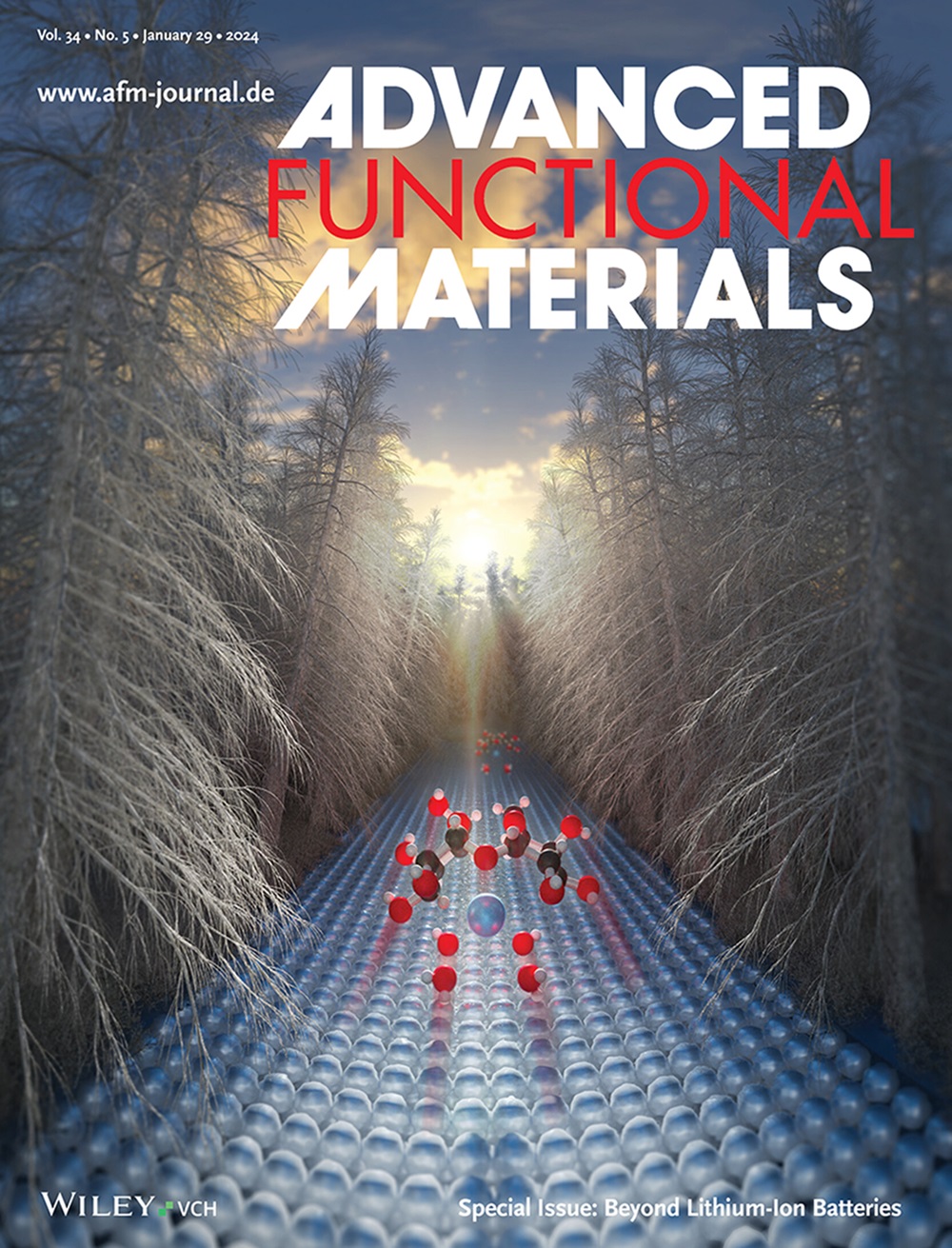具有分层三维纳米网状网络的病毒组装生物功能微阵列
IF 18.5
1区 材料科学
Q1 CHEMISTRY, MULTIDISCIPLINARY
引用次数: 0
摘要
迄今为止,由生物实体构建的三维(3D)分层皱褶材料仍是自然界的专利。在这里,通过建立一种高压二氧化碳(HPCD)诱导的不依赖热量和溶剂的通用基底收缩方法,创建了生物打印噬菌体构建的皱纹微阵列的多尺度功能性超多孔三维生物网络。这种方法能在软材料上形成各种皱纹图案,尤其适用于对溶剂和热敏感的生物材料,而其他方法都无法解决这些问题。噬菌体纳米纤丝(宽度为 7 纳米)自组装成有序排列的亚微米束(宽度为 100 纳米),在尺寸可控的微阵列(宽度为 200-600 微米)上卷曲成可调节的微尺度皱纹(宽度为 0.7-5.0 微米),呈现出四级分层纳米网状结构。HPCD 方法还能保护载入微阵列中的生物识别分子的生物活性,从而设计出使用内部脱氧核糖核酸酶载入的三维噬菌体微阵列制作的细菌传感芯片。与二维(2D)微点阵列相比,所开发的细菌传感芯片的检测灵敏度提高了 100 倍,重现性更高,并能正确识别从工业冷却塔收集的受污染水样中的嗜肺军团菌。本文章由计算机程序翻译,如有差异,请以英文原文为准。

Virus-Assembled Biofunctional Microarrays with Hierarchical 3D Nano-Reticular Network
Three-dimensional (3D) hierarchical wrinkled materials built with biological entities have so far remained exclusive to nature. Herein, multiscale functional ultraporous 3D bio-networks of bioprinted phage-built wrinkled microarrays are created through establishing a universal heat- and solvent-independent substrate-shrinkage method induced by high-pressure carbon dioxide (HPCD). This method results in diverse wrinkled patterns on soft materials and is particularly powerful for solvent- and heat-sensitive biomaterials, for which other methods have failed. The phage nanofilaments (7 nm width) self-assemble into orderly-aligned submicron bundles (100 nm width), which crimp into tunable microscale wrinkles (0.7–5.0 µm width) on size-controllable micro-arrays (200–600 µm width) exhibiting a four-level hierarchical nano-reticular structure. The HPCD method also protects the bioactivity of biorecognition molecules loaded into the microarrays, leading to the design of bacteria-sensing chips, made with in-house deoxyribozyme-loaded 3D phage microarrays. The developed bacteria-sensing chips achieve a limit of detection that is 100 × more sensitive with greater reproducibility compared to two-dimensional (2D) microdot arrays and correctly identify Legionella pneumophila in contaminated water samples collected from industrial cooling towers, highlighting phage-built wrinkled networks as a platform for bottom-up assembly of biological building blocks into biofunctional material.
求助全文
通过发布文献求助,成功后即可免费获取论文全文。
去求助
来源期刊

Advanced Functional Materials
工程技术-材料科学:综合
CiteScore
29.50
自引率
4.20%
发文量
2086
审稿时长
2.1 months
期刊介绍:
Firmly established as a top-tier materials science journal, Advanced Functional Materials reports breakthrough research in all aspects of materials science, including nanotechnology, chemistry, physics, and biology every week.
Advanced Functional Materials is known for its rapid and fair peer review, quality content, and high impact, making it the first choice of the international materials science community.
 求助内容:
求助内容: 应助结果提醒方式:
应助结果提醒方式:


